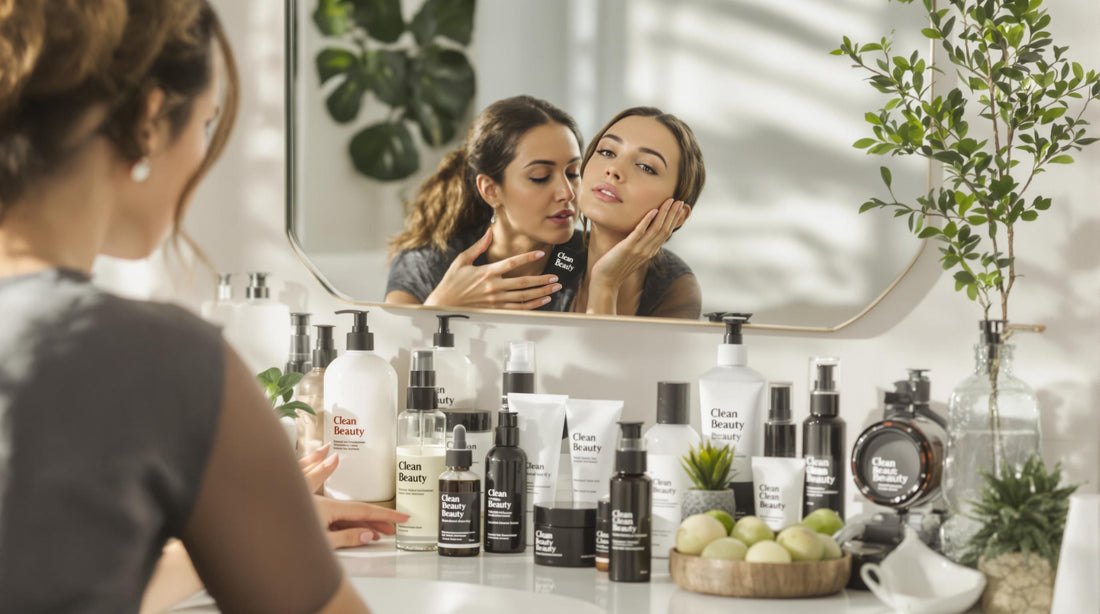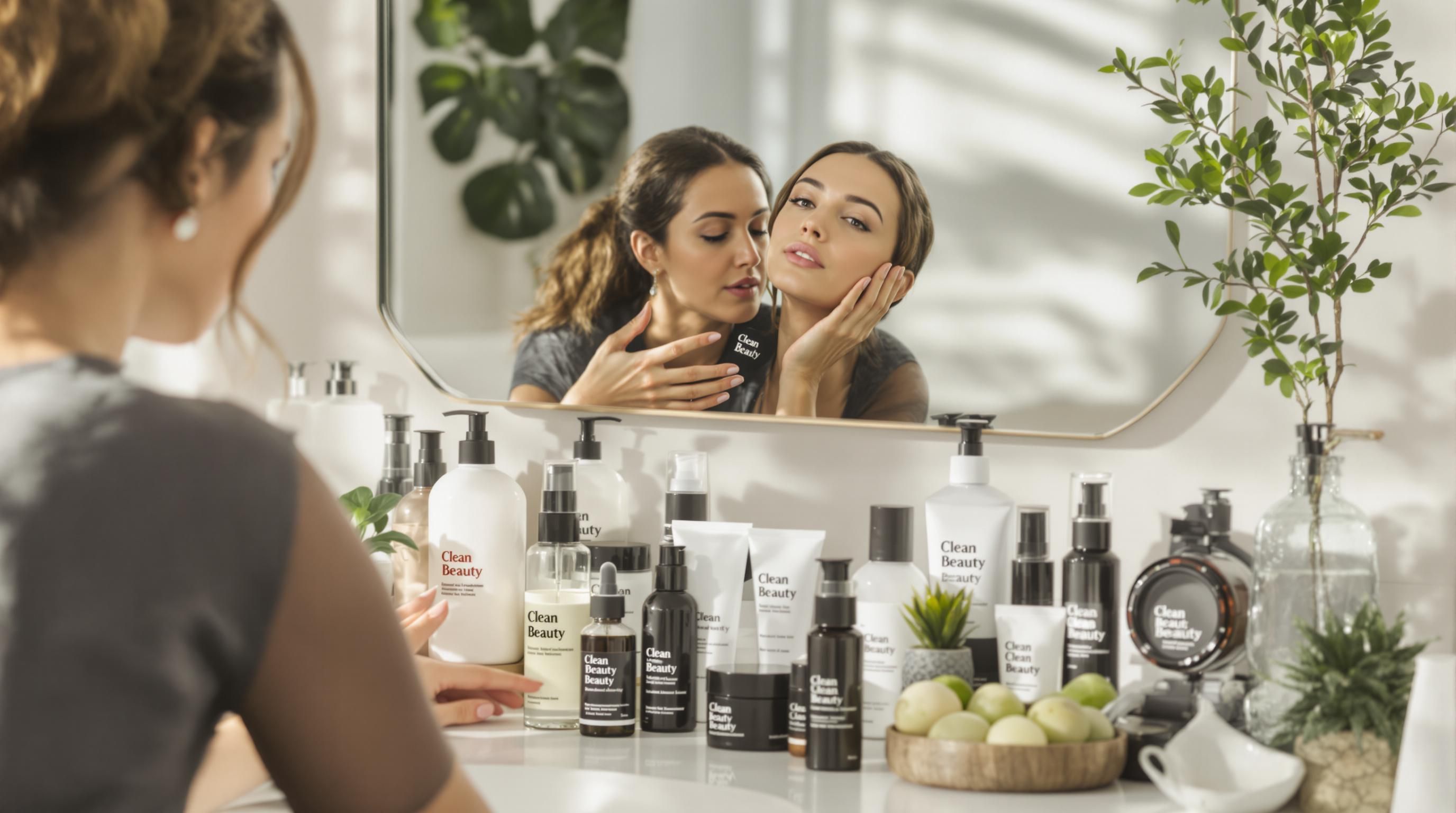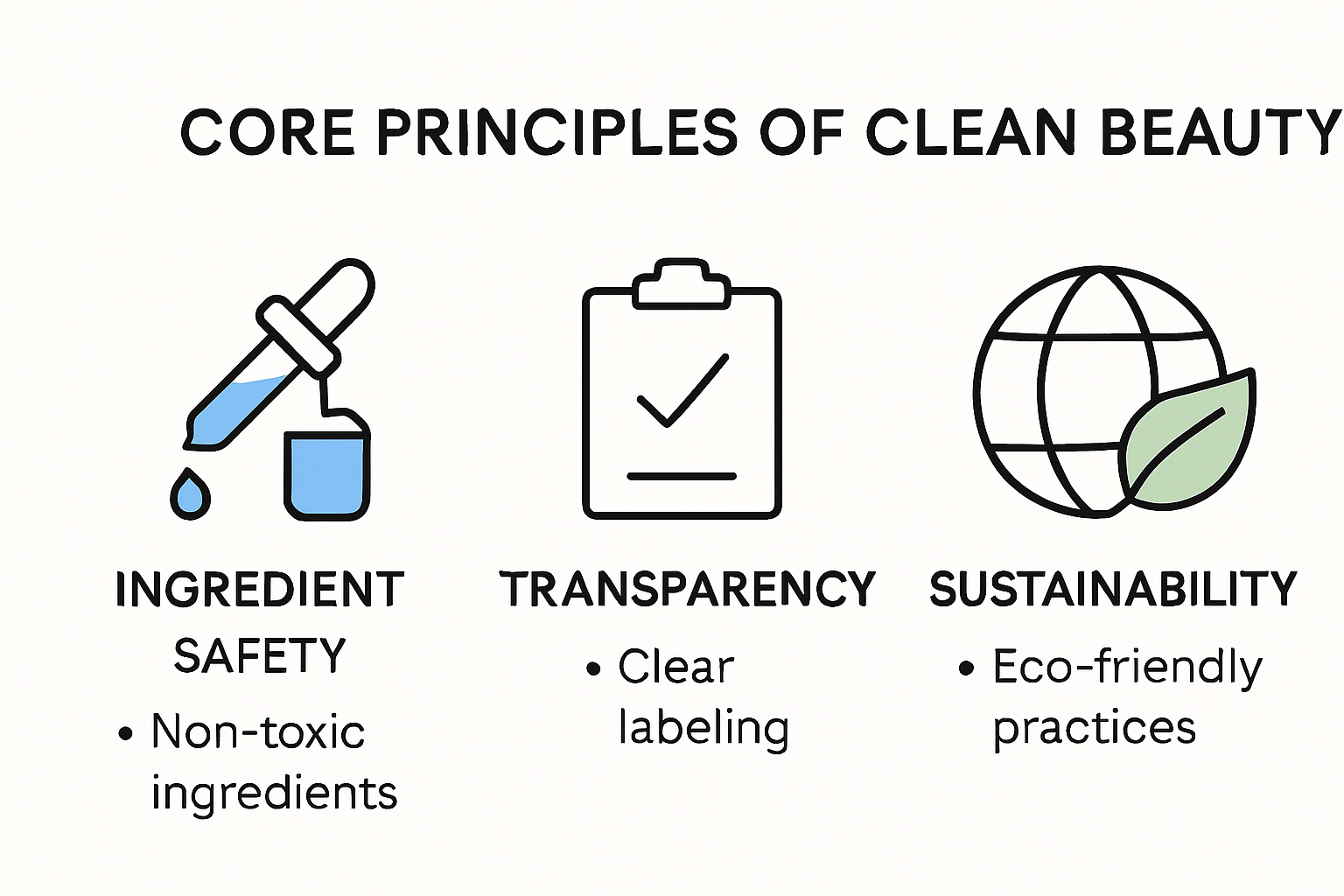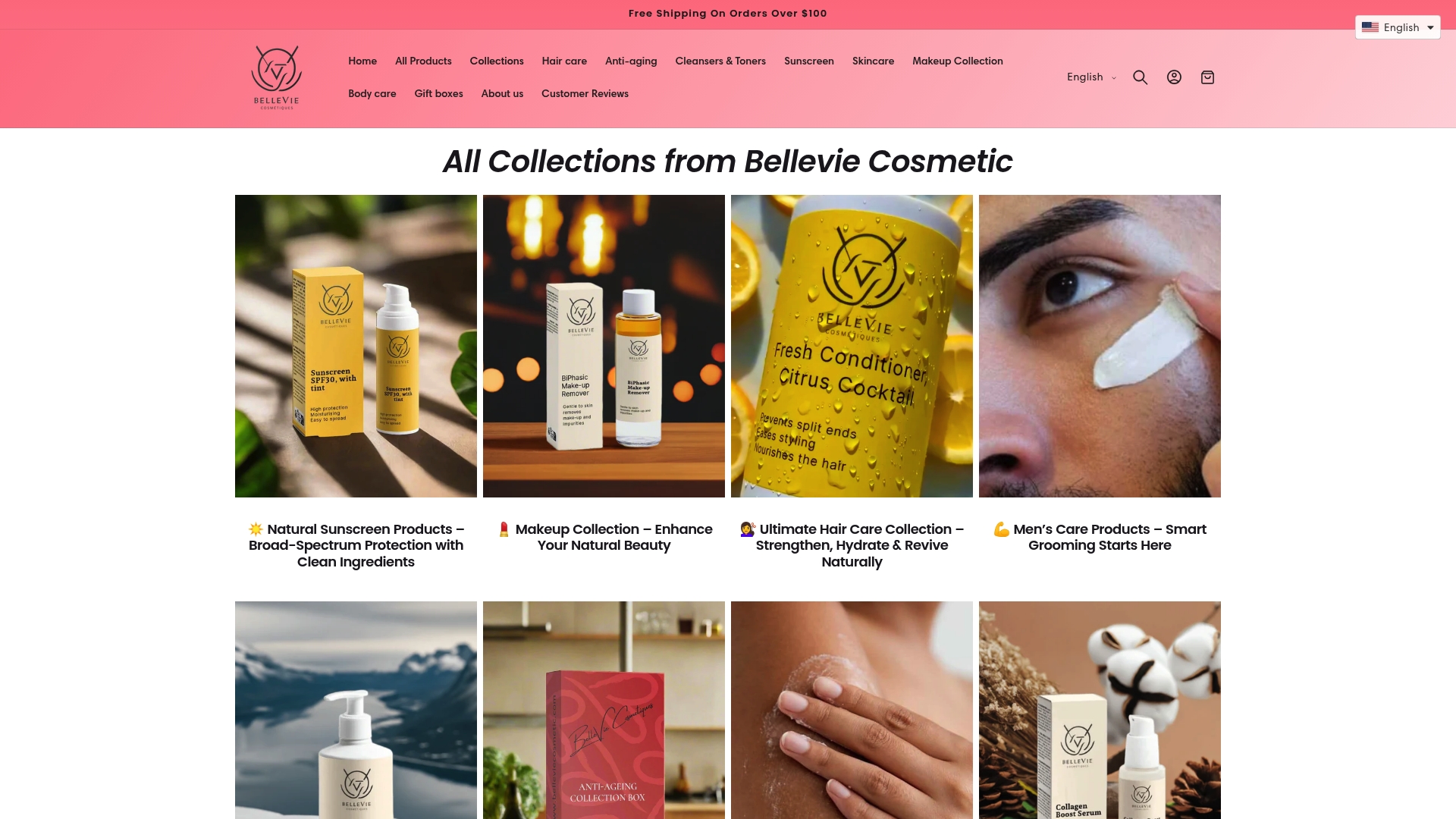Clean beauty jest wszędzie, a wraz z nowymi regulacjami na horyzoncie, wszyscy chcą wiedzieć, co naprawdę czyni produkt bezpiecznym. Większość osób nie zdaje sobie sprawy, że prawie jeden na osiem składników kosmetycznych sprzedawanych w USA zawiera chemikalia przemysłowe powiązane z rakiem lub zaburzeniami hormonalnymi. Jednak wszystkie te etykiety "clean", które widzisz? Nie zawsze są tym, czym się wydają. Prawdziwa historia nie polega na podążaniu za trendem, lecz na nauce, przejrzystości i zaskakującej mocy, jaką masz jako konsument, by domagać się lepszego dla swojej skóry — i planety.
Spis treści
- Definiowanie clean beauty w 2025 roku
- Kluczowe składniki i czego unikać
- Jak zbudować rutynę clean beauty
- Dlaczego clean beauty ma znaczenie dla skóry i planety
Szybkie podsumowanie
| Wniosek | Wyjaśnienie |
|---|---|
| Zrozum podstawowe zasady clean beauty. | Clean beauty stawia na pierwszym miejscu bezpieczeństwo składników, przejrzystość i zrównoważony rozwój w produktach do pielęgnacji osobistej. |
| Zbadaj szkodliwe składniki. | Zapoznaj się z chemikaliami, których należy unikać, takimi jak parabeny i formaldehyd, aby chronić swoje zdrowie. |
| Spersonalizuj swoją rutynę pielęgnacji skóry. | Oceń unikalne potrzeby swojej skóry, aby wybrać najskuteczniejsze produkty clean beauty dla siebie. |
| Podkreślaj praktyki zrównoważone. | Przyjmij ekologiczne nawyki, takie jak używanie wielokrotnego użytku narzędzi i minimalizowanie opakowań, aby wzbogacić swoją rutynę clean beauty. |
| Uświadom sobie globalny wpływ swoich wyborów. | Twój wybór produktów clean beauty przyczynia się do lepszego zdrowia i ochrony środowiska na całym świecie. |
Definiowanie clean beauty w 2025 roku
Clean beauty przekształciło się z niszowego trendu w potężny ruch, który zmienia branżę pielęgnacji skóry i kosmetyków. W miarę zbliżania się roku 2025, zrozumienie, co naprawdę oznacza clean beauty, staje się coraz ważniejsze dla świadomych konsumentów poszukujących zdrowszych i bardziej zrównoważonych opcji pielęgnacji osobistej.
Podstawowe zasady clean beauty
W swojej istocie clean beauty reprezentuje holistyczne podejście do pielęgnacji osobistej, które stawia na pierwszym miejscu zdrowie ludzi i środowiska. Według Environmental Defense Fund, clean beauty powinno być definiowane przez produkty stworzone z najbezpieczniejszych możliwych składników i minimalnym wpływem na środowisko. Oznacza to wyjście poza powierzchowne twierdzenia marketingowe i opracowanie rygorystycznych kryteriów oceny zarówno zdrowotnych, jak i ekologicznych konsekwencji.
Ruch opiera się na kilku kluczowych zasadach:
- Bezpieczeństwo składników: Eliminowanie potencjalnie szkodliwych chemikaliów i toksyn z formuł produktów
- Przejrzystość: Zapewnianie jasnych, kompleksowych informacji o składnikach produktów i ich pochodzeniu
- Zrównoważony rozwój: Minimalizowanie wpływu na środowisko poprzez odpowiedzialną produkcję i opakowania
Krajobraz regulacyjny i wyzwania
The Center for Environmental Health podkreśla kluczowe wyzwanie w obszarze clean beauty: brak ujednoliconych definicji. Obecnie FDA nie definiuje oficjalnie terminów takich jak „naturalny”, „clean” czy „organiczny” na etykietach kosmetyków. Ta regulacyjna niejasność stwarza przestrzeń dla potencjalnie wprowadzających w błąd praktyk marketingowych.
Jednak niedawne działania legislacyjne, takie jak Modernization of Cosmetics Regulation Act z 2022 roku (MoCRA), dążą do zwiększenia przejrzystości. Ustawa wymaga formalnej rejestracji zakładów kosmetycznych w FDA oraz nakazuje ujawnianie konkretnych składników zapachowych i smakowych, co sygnalizuje przesunięcie w kierunku bardziej rygorystycznego nadzoru.
Wzmocnienie pozycji konsumenta i świadomość składników
Healthline zaleca, aby konsumenci aktywnie angażowali się w zrozumienie clean beauty. Obejmuje to:
- Badanie i zapoznawanie się z potencjalnie kontrowersyjnymi składnikami
- Wybieranie marek z renomowanymi certyfikatami stron trzecich
- Weryfikowanie deklaracji na etykietach poprzez niezależne badania
W miarę dojrzewania ruchu clean beauty konsumenci stają się coraz bardziej wymagający. Szukają produktów, które nie tylko obiecują bezpieczeństwo i skuteczność, ale także wykazują prawdziwe zaangażowanie w etyczną produkcję, ochronę środowiska i transparentną komunikację.
W 2025 roku clean beauty to już nie tylko trend, ale fundamentalne przemyślenie podejścia do pielęgnacji osobistej — z priorytetem na zdrowie, zrównoważony rozwój i świadomą konsumpcję. Przyszłość urody to nie tylko dobre wyglądanie, ale także dobre samopoczucie związane z wyborami, które podejmujemy dla siebie i naszej planety.
Kluczowe składniki i czego unikać
Poruszanie się w świecie clean beauty wymaga zrozumienia nie tylko tego, jakie składniki warto stosować, ale także których unikać. W miarę jak konsumenci stają się bardziej świadomi, umiejętność czytania i interpretowania etykiet produktów stała się kluczową umiejętnością w dbaniu o zdrowie i dobre samopoczucie.
Szkodliwe chemikalia do wyeliminowania
Harvard Health wskazuje kilka kluczowych składników, które stanowią potencjalne zagrożenie dla zdrowia. Szczególnie składniki takie jak metylizotiazolinon (MI) i metylchloroizotiazolinon (MCI) są znanymi czynnikami wywołującymi kontaktowe zapalenie skóry i alergie skórne. Te konserwanty, często stosowane w celu przedłużenia trwałości produktu, mogą powodować znaczne podrażnienia skóry u wielu osób.
Dodatkowo, Healthline przedstawia kompleksową listę składników, których konsumenci powinni unikać:
- Parabeny: Potencjalne substancje zaburzające układ hormonalny powiązane z nierównowagą hormonalną
- Ftalany: Chemikalia, które mogą zakłócać zdrowie reprodukcyjne
- Formaldehyd: Znany czynnik rakotwórczy stosowany w niektórych konserwantach kosmetycznych
- Oksybenzon: Chemiczny składnik filtrów przeciwsłonecznych powiązany z potencjalnym zaburzeniem hormonalnym
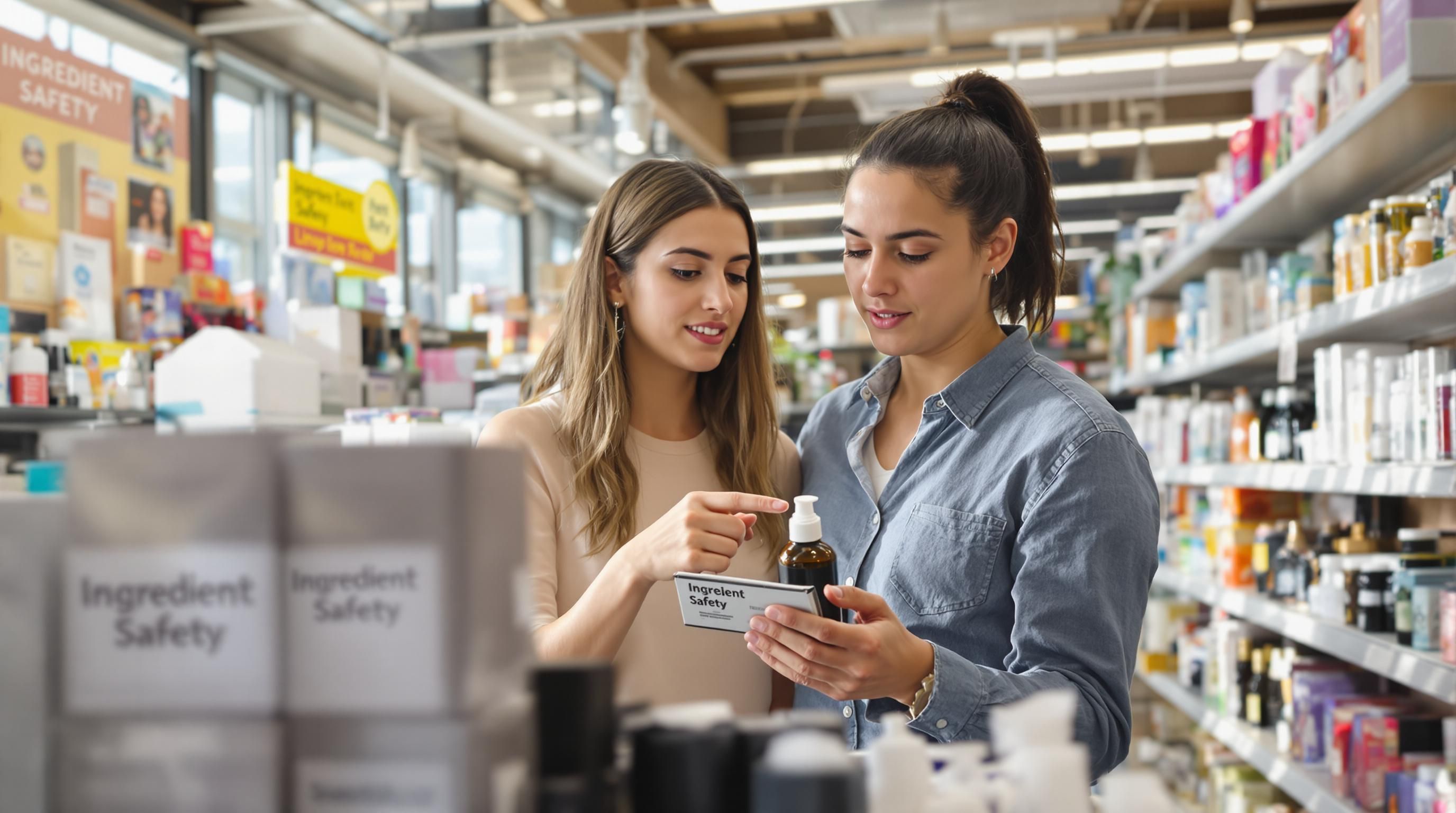
Aby pomóc Ci szybko rozpoznać składniki, których należy unikać, oraz ich potencjalne skutki, poniższa tabela podsumowuje główne szkodliwe chemikalia omówione w tej sekcji:
| Składnik | Zastosowanie/Gdzie występuje | Potencjalne ryzyko dla zdrowia |
|---|---|---|
| Parabeny | Konserwanty w kosmetykach | Zakłócenia endokrynologiczne, zaburzenia hormonalne |
| Ftalany | Zapachy, tworzywa sztuczne | Zakłócenia zdrowia reprodukcyjnego |
| Formaldehyd | Konserwant | Znany czynnik rakotwórczy |
| Oksybenzon | Filtry przeciwsłoneczne | Zakłócenia hormonalne |
| Metylizotiazolinon (MI) | Konserwant | Kontaktowe zapalenie skóry, alergia skórna |
| Metylchloroizotiazolinon (MCI) | Konserwant | Kontaktowe zapalenie skóry, alergia skórna |
Zrozumienie etykiet składników
Badanie Beauty Edit Szkoły Zdrowia Publicznego Harvarda T.H. Chan podkreśla znaczenie bycia świadomym czytelnikiem etykiet. Poza samym skanowaniem składników, konsumenci powinni szukać konkretnych znaków ostrzegawczych. Składniki kończące się na „-paraben”, takie jak metyloparaben czy propyloparaben, to czerwone flagi. Podobnie terminy takie jak „fragrance” mogą być ogólnym określeniem dla wielu nieujawnionych chemikaliów.
Kluczowe strategie identyfikacji problematycznych składników obejmują:
- Badaj bazy danych składników i zasoby naukowe
- Szukaj certyfikatów od renomowanych organizacji
- Wybieraj produkty z krótszymi, bardziej rozpoznawalnymi listami składników
- Priorytetowo traktuj marki zobowiązane do przejrzystości i czystych formuł
Naturalne Alternatywy i bezpieczne substytuty
Ruch clean beauty nie polega na eliminacji, lecz na przemyślanym zastępowaniu. Na każde potencjalnie szkodliwe chemikalia istnieją naturalne, skuteczne alternatywy. Olejki eteryczne, konserwanty roślinne i składniki pochodzenia mineralnego oferują potężne rozwiązania pielęgnacyjne bez kompromisów w kwestii bezpieczeństwa.
Konsumenci powinni szukać produktów, które zastępują syntetyczne chemikalia:
- Ekstrakty roślinne o udowodnionych korzyściach dla skóry
- Naturalne konserwanty, takie jak ekstrakt z rozmarynu
- Mineralne filtry przeciwsłoneczne
- Emolienty i nawilżacze pochodzenia roślinnego
W miarę jak branża kosmetyczna się rozwija, zrozumienie bezpieczeństwa składników staje się czymś więcej niż trendem — to podstawowe podejście do pielęgnacji osobistej. Dokonując świadomych wyborów, konsumenci mogą chronić swoje zdrowie, jednocześnie ciesząc się skutecznymi, luksusowymi produktami do pielęgnacji skóry zgodnymi z zasadami clean beauty.
Jak zbudować rutynę clean beauty
Tworzenie rutyny clean beauty to więcej niż tylko wymiana produktów. To holistyczne podejście do pielęgnacji osobistej, które stawia na zdrowie, zrównoważony rozwój i świadomą konsumpcję. Ta kompleksowa strategia wymaga zrozumienia unikalnych potrzeb skóry przy jednoczesnym podejmowaniu ekologicznych wyborów.
Ocena potrzeb pielęgnacyjnych skóry
Biuro Zrównoważonego Rozwoju Uniwersytetu Tennessee sugeruje, że budowanie rutyny clean beauty zaczyna się od dokładnego zrozumienia indywidualnych potrzeb Twojej skóry. Oznacza to wyjście poza ogólne zalecenia i opracowanie spersonalizowanego podejścia uwzględniającego typ skóry, czynniki środowiskowe oraz specyficzne problemy.
Kluczowe kroki w tej ocenie obejmują:
- Analiza typu skóry: Określ, czy masz skórę tłustą, suchą, mieszaną czy wrażliwą
- Specyficzne problemy: Zidentyfikuj ukierunkowane problemy, takie jak starzenie się, trądzik, hiperpigmentacja
- Czynniki środowiskowe: Weź pod uwagę, jak klimat i styl życia wpływają na Twoją skórę
Następująca tabela podsumowuje te kroki, pomagając zorganizować główne kwestie przy tworzeniu spersonalizowanej rutyny clean beauty:
| Etap oceny | Co ocenić | Przykładowe czynniki |
|---|---|---|
| Analiza typu skóry | Podstawowe cechy skóry | Tłusta, sucha, mieszana, wrażliwa |
| Specyficzne problemy | Obecne problemy skórne do rozwiązania | Starzenie się, trądzik, hiperpigmentacja |
| Czynniki środowiskowe | Wpływ klimatu i stylu życia na Twoją skórę | Wilgotność, zanieczyszczenia, aktywność |
Wybór czystych produktów kosmetycznych
Badanie Beauty Edit Harvard T.H. Chan School of Public Health podkreśla kluczowe znaczenie czytania etykiet. Wybierając czyste produkty kosmetyczne, konsumenci muszą patrzeć poza marketingowe obietnice i dokładnie analizować listy składników.
Strategie wyboru produktów obejmują:
- Priorytetowo traktuj produkty z minimalną, rozpoznawalną listą składników
- Szukaj certyfikatów niezależnych organizacji
- Unikaj produktów zawierających parabeny, talk i PFAS
- Badaj przejrzystość marek i praktyki etyczne
Zrównoważone praktyki kosmetyczne
The New York League of Conservation Voters podkreśla szerszy wpływ środowiskowy rutyn pielęgnacyjnych. Budowanie czystej rutyny urody wykracza poza wybór produktów i obejmuje zrównoważone praktyki, które redukują odpady i minimalizują ślad ekologiczny.
Zalecane zrównoważone podejścia:
- Używaj wielokrotnego użytku płatków bawełnianych i narzędzi do demakijażu
- Wybieraj produkty z opakowaniami nadającymi się do recyklingu lub minimalnymi
- Rozważ stałe lub skoncentrowane formy produktów
- Odkrywaj domowe rozwiązania kosmetyczne, aby zmniejszyć ilość odpadów opakowaniowych
Przejście na czystą rutynę pielęgnacyjną nie jest procesem natychmiastowym. Wymaga cierpliwości, badań i chęci eksperymentowania. Zacznij od stopniowej wymiany produktów, koncentrując się na tych, które mają największy wpływ na twoją skórę i środowisko.
Pamiętaj, że czysta uroda to podróż ciągłego uczenia się. Bądź na bieżąco z nowymi badaniami, innowacjami składników i zrównoważonymi praktykami. Dokonując przemyślanych wyborów, możesz stworzyć rutynę pielęgnacyjną wspierającą zarówno zdrowie osobiste, jak i dobro środowiska.
Ostatecznie czysta rutyna pielęgnacyjna to coś więcej niż estetyka. Reprezentuje zobowiązanie do osobistego dobrostanu, etycznej konsumpcji i odpowiedzialnego zarządzania środowiskiem. Każdy wybór produktu staje się okazją do wspierania marek i praktyk zgodnych z tymi holistycznymi zasadami.
Dlaczego czysta uroda ma znaczenie dla skóry i planety
Czysta uroda wykracza poza indywidualne preferencje pielęgnacji skóry, reprezentując kluczowe przecięcie osobistego zdrowia i globalnej odpowiedzialności środowiskowej. Zrozumienie szerszych implikacji naszych wyborów kosmetycznych ujawnia głęboki wpływ, jaki pozornie małe decyzje mogą mieć zarówno na dobrostan człowieka, jak i ekosystemy planety.
Implikacje dla zdrowia osobistego
Harvard Health ujawnia, że niektóre chemikalia kosmetyczne, takie jak methylisothiazolinone (MI), mogą wywoływać poważne zagrożenia zdrowotne. Składniki te nie tylko powodują natychmiastowe reakcje skórne, takie jak kontaktowe zapalenie skóry, ale mogą także stanowić długoterminowe wyzwania zdrowotne wykraczające daleko poza powierzchniowe podrażnienia.
Kluczowe kwestie zdrowotne obejmują:
- Wrażliwość skóry: Ograniczanie narażenia na drażniące chemikalia, które mogą powodować stany zapalne
- Równowaga hormonalna: Minimalizowanie kontaktu ze związkami zaburzającymi układ hormonalny
- Zapobieganie reakcjom alergicznym: Unikanie składników wywołujących reakcje układu odpornościowego
Wpływ na ekosystem środowiskowy
Frontiers in Environmental Science podkreśla głębokie konsekwencje ekologiczne składników konwencjonalnych produktów kosmetycznych. Chemikalia takie jak parabeny i niektóre filtry UV mogą utrzymywać się w środowiskach wodnych, tworząc złożone i potencjalnie niszczące efekty falowe w ekosystemach morskich.
Wyzwania środowiskowe związane z tradycyjnymi produktami kosmetycznymi obejmują:
- Bioakumulacja syntetycznych chemikaliów w organizmach morskich
- Zakłócenie układów rozrodczych i hormonalnych dzikiej fauny
- Długotrwałe zanieczyszczenie zasobów wodnych
Mikroplastiki i szersze konsekwencje ekologiczne
Badania opublikowane przez National Center for Biotechnology Information ujawniają ukryte zagrożenie środowiskowe mikroplastików w produktach kosmetycznych. Te mikroskopijne cząsteczki, często obecne w środkach złuszczających i opakowaniach, stanowią poważne wyzwanie ekologiczne, które wykracza daleko poza indywidualne użycie produktu.
Mikroplastiki tworzą złożone wyzwania środowiskowe poprzez:
- Bycie spożywanym przez organizmy morskie
- Wprowadzanie chemicznych zanieczyszczeń do łańcuchów pokarmowych
- Potencjalny wpływ na globalną bioróżnorodność i równowagę ekosystemów
Wybór clean beauty to coś więcej niż osobista decyzja o dobrostanie. Reprezentuje zbiorowe zobowiązanie do zdrowia planety, uznając, że nasze indywidualne wybory tworzą systemowe skutki. Wybierając produkty z odpowiedzialnie pozyskiwanymi składnikami, minimalnym śladem środowiskowym i przejrzystymi procesami produkcyjnymi, konsumenci stają się aktywnymi uczestnikami globalnego ruchu na rzecz zrównoważonego rozwoju.
Rewolucja clean beauty zmusza nas do ponownego przemyślenia naszego stosunku do produktów do pielęgnacji osobistej. Wymaga, abyśmy spojrzeli poza natychmiastowe korzyści estetyczne i rozważyli szersze konsekwencje naszego konsumpcjonizmu. Każdy wybór produktu staje się okazją do wspierania ochrony ekologicznej, zdrowia ludzkiego i odpowiedzialnych innowacji.
Ostatecznie czysta uroda polega na tworzeniu harmonijnej relacji między dobrym samopoczuciem osobistym a troską o środowisko. Reprezentuje holistyczne podejście, które uznaje złożone powiązania między indywidualnymi wyborami a globalnymi systemami ekologicznymi. Przyjmując zasady czystej urody, przyczyniamy się do bardziej zrównoważonej, świadomej zdrowotnie przyszłości dla nas samych i przyszłych pokoleń.
Najczęściej zadawane pytania
Co oznacza czysta uroda?
Czysta uroda odnosi się do produktów do pielęgnacji osobistej wykonanych z bezpiecznych, nietoksycznych składników, które priorytetowo traktują zarówno zdrowie człowieka, jak i wpływ na środowisko. Podkreśla przejrzystość i zrównoważony rozwój w formułowaniu i pozyskiwaniu składników.
Jakie są szkodliwe składniki, których należy unikać w czystej urodzie?
Typowe szkodliwe składniki, których należy unikać, to parabeny, ftalany, formaldehyd i oksybenzon, ponieważ te substancje mogą zaburzać równowagę hormonalną i powodować problemy zdrowotne.
Jak mogę zbudować rutynę czystej urody?
Aby zbudować rutynę czystej urody, zacznij od oceny typu skóry i konkretnych problemów, następnie wybierz produkty z minimalną, rozpoznawalną listą składników i wprowadź zrównoważone praktyki, takie jak używanie wielokrotnego użytku narzędzi.
Dlaczego czysta uroda jest ważna dla środowiska?
Czysta uroda jest ważna dla środowiska, ponieważ ogranicza użycie szkodliwych chemikaliów, które mogą zanieczyszczać ekosystemy i szkodzić dzikiej przyrodzie. Wybór czystych produktów wspiera zrównoważony rozwój i etyczne praktyki w branży kosmetycznej.
Gotowy, by wprowadzić czystą urodę w praktykę?
Jeśli z naszego przewodnika dowiedziałeś się, że zamieszanie na etykietach, ukryte toksyny i przytłaczający wybór utrudniają stworzenie prawdziwej rutyny czystej urody, nie jesteś sam. Wielu miłośników pielęgnacji chce unikać ostrych chemikaliów i mylących obietnic, ale ma trudności ze znalezieniem wiarygodnych produktów, które odpowiadają podstawowym zasadom czystej urody — przejrzystości składników, bezpieczeństwa i zrównoważonego rozwoju. Właśnie tutaj BelleVieCosmetic.com oferuje Ci jaśniejszą ścieżkę.
Nasza kolekcja jest stworzona dla świadomych konsumentów, którzy oczekują więcej od codziennej pielęgnacji. Każda formuła jest produkowana w Europie zgodnie z rygorystycznymi normami ISO, z certyfikowanymi składnikami organicznymi i bez ryzykownych chemikaliów, takich jak parabeny czy oksybenzon. Odkryj wszystko, od odżywczych środków oczyszczających i przejrzystych serum przeciwstarzeniowych po nasz nagrodzony mineralny krem z filtrem SPF50, wszystko w jednym miejscu. Kup naturalną i opartą na nauce pielęgnację skóry już dziś i odbierz darmowy prezent do pielęgnacji przy pierwszym zamówieniu po subskrypcji. Usuń niepewność z czystej urody — wybierz to, co najlepsze dla Twojej skóry i planety już teraz.
Zalecane
- Top 5 sprawdzonych składników do pielęgnacji skóry potwierdzonych naukowo (i produktów, które naprawdę działają) – BelleVie Cosmétiques
- Top 5 sprawdzonych składników do pielęgnacji skóry potwierdzonych naukowo (i produktów, które naprawdę działają) – BelleVie Cosmétiques
- Top 5 olejków do twarzy dla promiennej skóry 2025 | BelleVie Naturalna Kosmetyka – BelleVie Cosmétiques
